When time is short and the financial picture is unclear, insolvency practitioners (IPs) need more than spreadsheets and PDF statements. Whether you’re preparing for a pre-pack sale, assessing director conduct, or investigating preferential payments, the speed and quality of data collection for insolvency work can shape the outcome of a case.
But traditional bank statement collection often slows the entire process:
- Clients delay sending documents
- Records arrive in mixed formats across multiple accounts
- Critical gaps in transaction history force follow-up requests
To move faster and act decisively, leading IPs are now adopting purpose-built platforms for data collection in insolvency. These tools go beyond simple uploads, offering categorised transactions, affordability insights, and export-ready case files in hours, not days.
In this blog, we’ll look at five platforms built to support insolvency investigations, each with features designed to reduce admin, improve accuracy, and give you the full picture, without client delays.
Comparing Top 5 Tools for Insolvency
| Tool | Best For | Open Banking Access | Affordability/Forensic Insights | Export Formats | Pricing Model |
|---|---|---|---|---|---|
| Finexer | UK-focused data collection for insolvency and legal workflows | ✅ (99% of UK banks) | ✅ Affordability scoring, income visibility | PDF, CSV, JSON | Usage-based; no setup or hidden fees |
| Validis | Accounting system data for insolvency audits and pre-packs | ❌ (Accounting integrations only) | ✅ Forensic ledger analysis | Excel, CSV | Per-case or per-file quote |
| Circit | Bank-verified statements and third-party confirmations | ✅ (Direct bank confirmation) | ❌ (No scoring or categorisation) | Per-confirmation or volume-based | |
| Red Flag Alert | Real-time risk alerts for distressed companies | ✅ (Business credit + transaction summaries) | ✅ Risk scoring & early warnings | PDF, dashboard | Tiered plans or custom enterprise pricing |
| Valid8 Financial | Bank transaction analysis for insolvency & fraud review | ✅ (Open Banking + uploads) | ✅ Categorisation, red flag detection | PDF, JSON, dashboards | Per-file or case-based quote |
1. Finexer
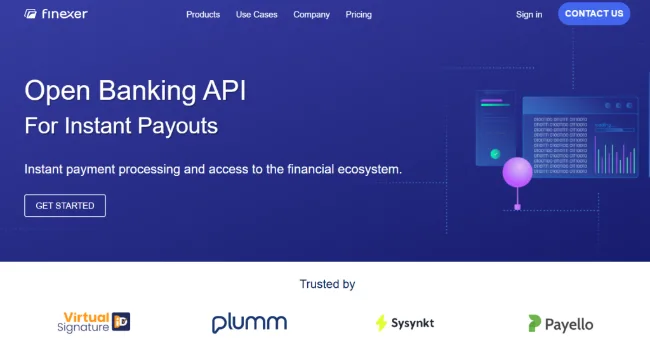
Best for:
Insolvency professionals needing instant access to client bank data without delays or manual document handling.
Overview:
When it comes to fast and accurate data collection for insolvency, Finexer stands out as a UK-focused Open Banking platform tailored for time-sensitive financial investigations. Instead of waiting on emailed PDFs or inconsistent bank statements, practitioners get real-time access to a client’s full transaction history across multiple accounts.
This is especially critical in:
- Pre-pack and administration cases
- Director conduct assessments
- Preferential and antecedent transaction reviews
Key Features:
- Connects to 99% of UK banks via a secure Open Banking link
- Aggregates personal and business accounts into a single view
- Automated categorisation (e.g. salary, gambling, transfers)
- Affordability and liquidity scoring for quick risk insights
- Export options: PDF, CSV, or JSON case-ready formats
- White-labelled flows with no app required
- Usage-based pricing: No setup, cancellation, or hidden fees
Pros:
- Designed specifically for UK insolvency and legal professionals
- Reduces time spent chasing bank statements by up to 90%
- Gives full visibility into income sources, debts, and asset flow
- Exportable reports are ready for inclusion in case files or court submissions
- Fully FCA-regulated infrastructure ensures compliance
Cons:
- Currently focused on UK banks only
- Doesn’t include forensic tagging or legal case management integration (must be paired with external tools for those needs)
“Our clients in the legal and accountancy sectors expect the highest standards of efficiency and security, and Finexer’s solutions help us deliver on those expectations every day.”
— David Kern, CEO of VirtualSignature-ID
Get Started
Connect today and see why businesses trust Finexer for secure, compliant, and tailored open banking solutions.
What is bank data collection for insolvency?
It’s the process of gathering client bank data, like transactions and balances, for insolvency investigations, asset tracing, or director conduct analysis.
Why use Open Banking for insolvency cases?
Open Banking allows secure, real-time access to verified bank data, avoiding delays from PDFs or emails and speeding up insolvency investigations.
2. Validis
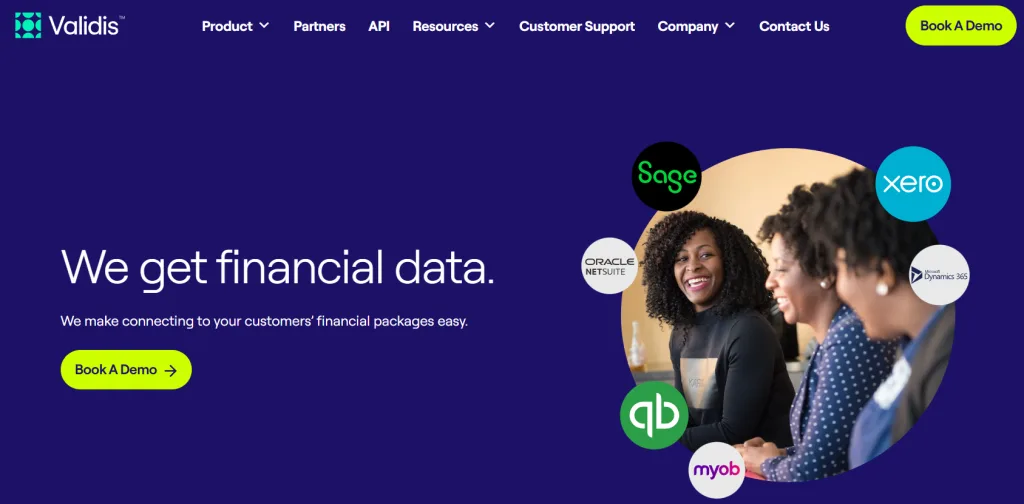
Best for
Insolvency professionals and auditors needing direct access to client accounting systems for detailed financial analysis.
Overview
Validis is a specialist tool for bank data collection in insolvency where internal books and records must be verified quickly. Instead of waiting on emailed spreadsheets or bank statements, IPs can pull structured, read-only data straight from systems like Sage or Xero. This allows for deep financial investigation,ideal during pre-packs, trading reviews, or statement of affairs preparation.
Key Features
- Direct extraction from accounting platforms like Xero, QuickBooks, and Sage
- Secure read-only access to general ledger, trial balance, and bank transactions
- Exportable formats for Excel-based reconciliation and working papers
- Automated identification of anomalies or incomplete records
- Enables faster internal vs external bank reconciliation
Pros
- Saves time requesting and interpreting messy spreadsheets
- Allows for forensic review without waiting on client uploads
- Supports insolvency workflows where bookkeeping access is possible
- Useful for identifying misstatements, pre-liquidation issues, or shadow transactions
Cons
- Needs client login or accounting software access, which may not be viable in all cases
- Less effective post-liquidation where records are unavailable or incomplete
- Doesn’t cover personal bank accounts unless linked to business accounting
Pricing
Validis uses a per-case or per-file quote model, typically arranged through account management. Costs vary depending on file size and client system integrations.
3. Circit
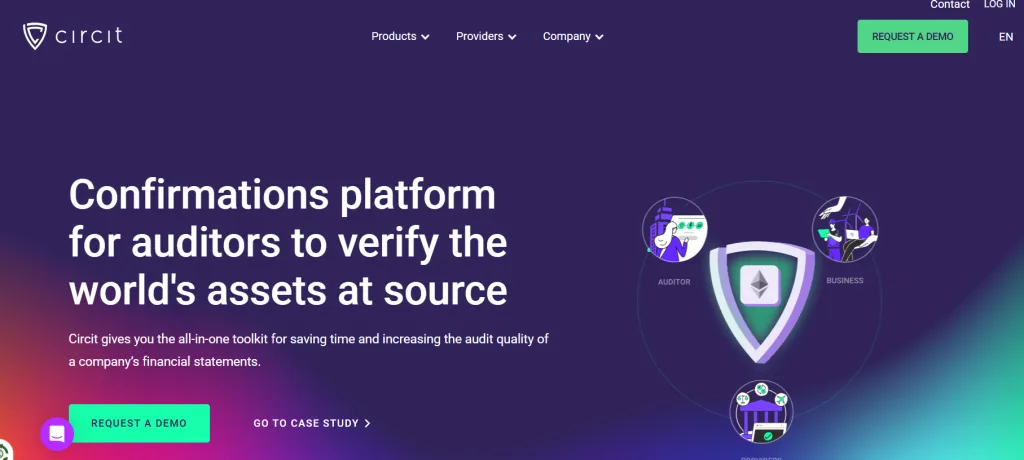
Best for
Insolvency professionals and auditors needing verified financial evidence directly from banks and third-party institutions.
Overview
Circit is a financial audit and confirmation platform trusted by Big Four firms and insolvency teams alike. Rather than chasing down directors or clients for account access or PDF statements, Circit lets you request verified bank data directly from the source. This reduces the risk of tampered records and speeds up trust account and transaction audits.
For insolvency practitioners handling high-risk or sensitive investigations, such as suspected misconduct or intercompany transfers, Circit ensures the evidence you gather is verifiable, timestamped, and legally sound.
Key Features
- Direct confirmation requests to banks and financial institutions
- Verified source data (not client-uploaded files)
- Time-stamped, audit-ready documentation
- Supports law firms, IPs, and accounting practices
- Used by regulators and top-tier auditors
Pros
- Reduces reliance on clients during insolvency evidence gathering
- Provides third-party validation that holds up in legal reviews
- Ensures complete transaction history without gaps or omissions
- Helps detect manipulation or withheld accounts
Cons
- Requires bank participation, not all institutions support real-time confirmations
- More focused on formal confirmations than ongoing data feeds
- Best suited for audit-style procedures rather than affordability reviews
Pricing
Circit operates on a per-confirmation or volume licensing model depending on firm size. Pricing is typically handled via sales outreach, with options for insolvency teams, law firms, and audit professionals.
What data do insolvency practitioners need?
They typically need account balances, income sources, large payments, and suspicious transactions across all client accounts to assess financial health.
How do these tools reduce delays?
They automate bank data collection with client consent, eliminating the need for manual document sharing and enabling same-day financial evidence access.
4. Red Flag Alert
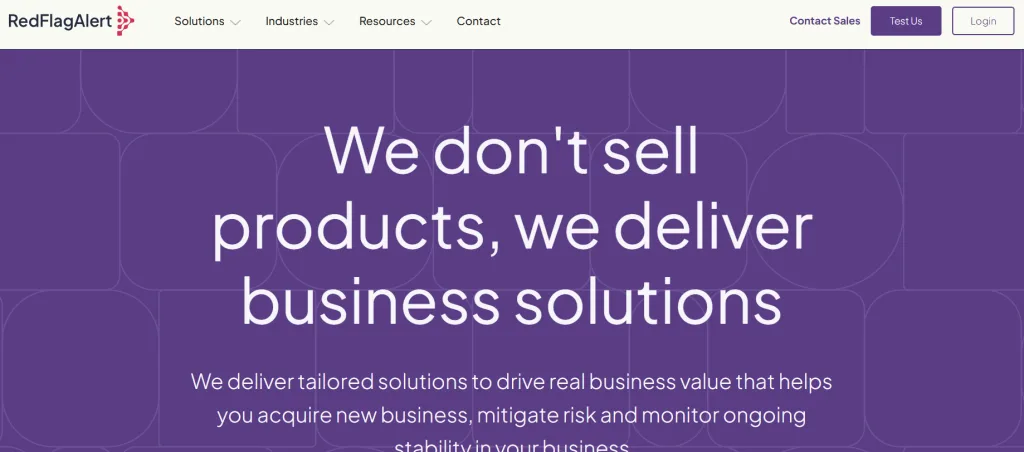
Best for: Early warning and real-time monitoring of financially distressed businesses
Overview:
Red Flag Alert provides real-time financial risk intelligence sourced from Open Banking and other credit bureau data. While it’s traditionally used for credit risk and business monitoring, many insolvency teams use it to pre-screen directors or company clients before initiating administration or restructuring processes.
Key Features:
- Aggregated financial risk indicators from thousands of UK companies
- Access to recent bank transaction summaries and warning signs
- Income stream analysis and director/shareholder flagging
- Alerts for late payments, cash-flow stress, or suspicious activity
Pros:
- Enables early intervention before insolvency worsens
- Bank-level indicators support deeper investigations into mismanagement
- Strong business intelligence layer for insolvency planning
Cons:
- Better suited for monitoring and triage rather than full transaction history
- Data depth varies depending on business profile and bank feed access
- Not tailored for individual client data collection or post-appointment audits
Pricing:
Red Flag Alert offers tiered plans based on data access level. Insolvency-focused teams typically require custom pricing and API access to integrate into internal workflows.
5. Valid8 Financial
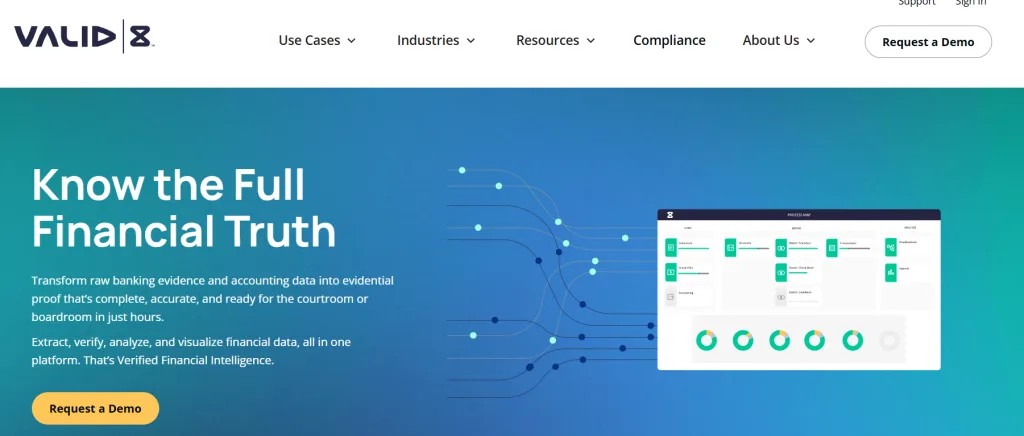
Best for: Forensic reviews and insolvency-based bank data analysis
Overview:
Valid8 Financial is designed for professionals managing fraud investigations, restructuring, and insolvency cases. It collects and organises full bank transaction data from multiple accounts, providing investigators with audit-ready views of cash flow, fund movements, and potential red flags across an entity’s financial footprint.
Key Features:
- Secure ingestion of client banking data from Open Banking or uploaded statements
- Categorises transactions by source, counterparty, and pattern
- Reconstructs financial flows across multiple accounts and entities
- Highlights preferential payments, bounced transactions, and irregular withdrawals
Pros:
- Built specifically for insolvency and forensic accounting use cases
- Supports bulk uploads and historical bank statement digitisation
- Reduces time spent on reconciliation and statement tracing
- Visual timelines and dashboards support court-ready reporting
Cons:
- May require onboarding support for complex workflows
- Interface is more functional than user-friendly for casual users
- Relies on bank statement uploads if Open Banking access is unavailable
Pricing:
Valid8 offers case-based or per-file pricing. Larger insolvency firms may request enterprise plans with access to workflow automation and team permissions. Pricing details are typically shared upon request, depending on case volume.
How does Finexer help with affordability checks in insolvency?
Finexer uses Open Banking to show verified income, spending, and balances, giving insolvency practitioners clear affordability insights in hours, not days.
Are these tools cost-effective for small firms?
Yes. Most offer usage-based or per-case pricing, making financial data automation accessible for smaller insolvency practices with limited resources.
Need Faster Bank Data for Insolvency Cases?
Switch from chasing PDFs to real-time financial visibility. Try Finexer!
![5 Platforms for Fast and Accurate Data Collection for Insolvency in 2025 1 Top 5 Data Collection Tools for Insolvency Cases in the UK [2025]](/wp-content/uploads/2025/05/Data-collection-tools-for-insolvency-jpg.webp)